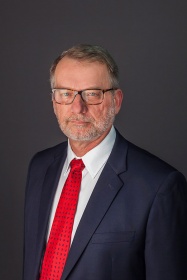PHILADELPHIA – Leaders of the Ohio Academic Resources Network (OARnet) recently attended a number of workshops and discussions all aimed at continuing to advance networking services to thousands of educational institutions across the nation.

The co-located workshops and meetings included a National Science Foundation (NSF) Campus Cyberinfrastructure Primary Investigator (PI) workshop and the ESnet Site Coordinators Committee (ESCC) at the fall member meeting of The Quilt, held in Philadelphia Oct. 19-21.
The Quilt is the national coalition of advanced regional networks for research and education, representing 36 regional networks that provide advanced network services and applications to more than 200 universities and thousands of other educational institutions. A main initiative of The Quilt, which meets twice a year, is to provide advanced network services at a low cost, which it makes available through the aggregate buying power of its members.
Prior to the meeting, OARnet Interim Executive Director Paul Schopis was elected chairman of The Quilt’s executive committee, the de facto chairman of the board of directors. Schopis was elected vice chairman of the executive committee last year and stepped up to the interim chairman position on Oct. 1. He will serve as chairman until Dec. 31, 2017.
Schopis is the first person to serve as chairman of the executive committee twice.
“It’s an honor, because you’re selected by your peers because they see you as being able to carry forward the work membership identifies as important,” Schopis said.
A number of those important tasks were discussed in workshops and meetings, several of which were of interest to OARnet attendees:
The NSF Campus Cyberinfrastructure Program: The workshop gave cyberinfrastructure PIs a chance to meet and discuss network security, science-driven applications and regional networks as technical and cyberinfrastructure resources.
“The NSF has realized that the flexibility and aggregation aspects of the regional networks really makes a lot of their cyberinfrastructure programs more doable,” Schopis said. “Say a campus is assigned a Science DMZ, they see a real value of how regionals can get things done.”
A Science DMZ is a network architecture to support Big Data. OARnet worked with The Ohio State University to develop such a Science DMZ in 2012 through an NSF grant.
The Future Facilities group: Schopis was a presenter and participant during this panel discussion about case studies in renewing fiber indefeasible rights of use (IRUs). OARnet is in the process of renewing much of its statewide backbone fiber IRUs, having developed its fiber-optic network by purchasing dark fiber through 20-year IRUs in 2002.
The Regional Network Security Panel Discussion: Mark Beadles, OARnet’s information security officer, participated in the discussion on the security landscape that focused on technology, policy and education.
The Routing Group: Schopis is part of a group that is working to develop best practices for regional networks, such as OARnet, to work together to communicate and engage with vendors for more of a national conversation about fiber and technological needs.
“We’re aggregators,” Schopis said. “We aggregate internet, we aggregate content networks, we aggregate Internet2, we aggregate the other research networks to make them available to our clients, and so we become basically the place that is able to provide the scale that makes all that connectivity affordable to a very wide base of people. Otherwise it’d be cost prohibitive, so we’re working to develop best practices to better understand routing policies and how to make it more effective for all involved.”
Schopis said there will be a half-day session on this issue during the 2017 winter member meeting of The Quilt, Feb. 7-9 in La Jolla, Calif.
The Ohio Academic Resources Network (OARnet), a member of the Ohio Department of Higher Education’s Ohio Technology Consortium, provides technology solutions for Ohio's education, public broadcasting, health care and government communities. Since 1987, OARnet has identified and deployed shared services that reduce costs, deliver quality programs, increase productivity and improve customer service. Communities voluntarily participate in the OARnet consortium because they value these benefits and services. Ultimately, OARnet promotes community and economic development by expanding access to affordable technology. For more: www.oar.net. Follow OARnet on LinkedIn, Facebook and Twitter.